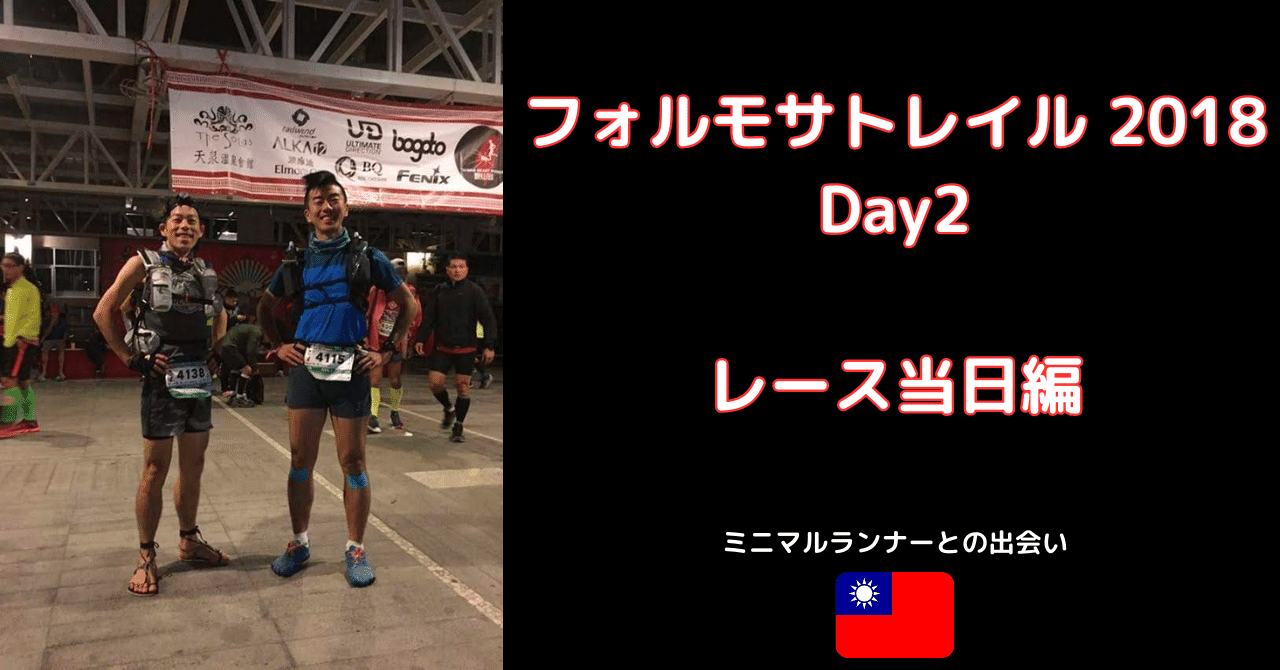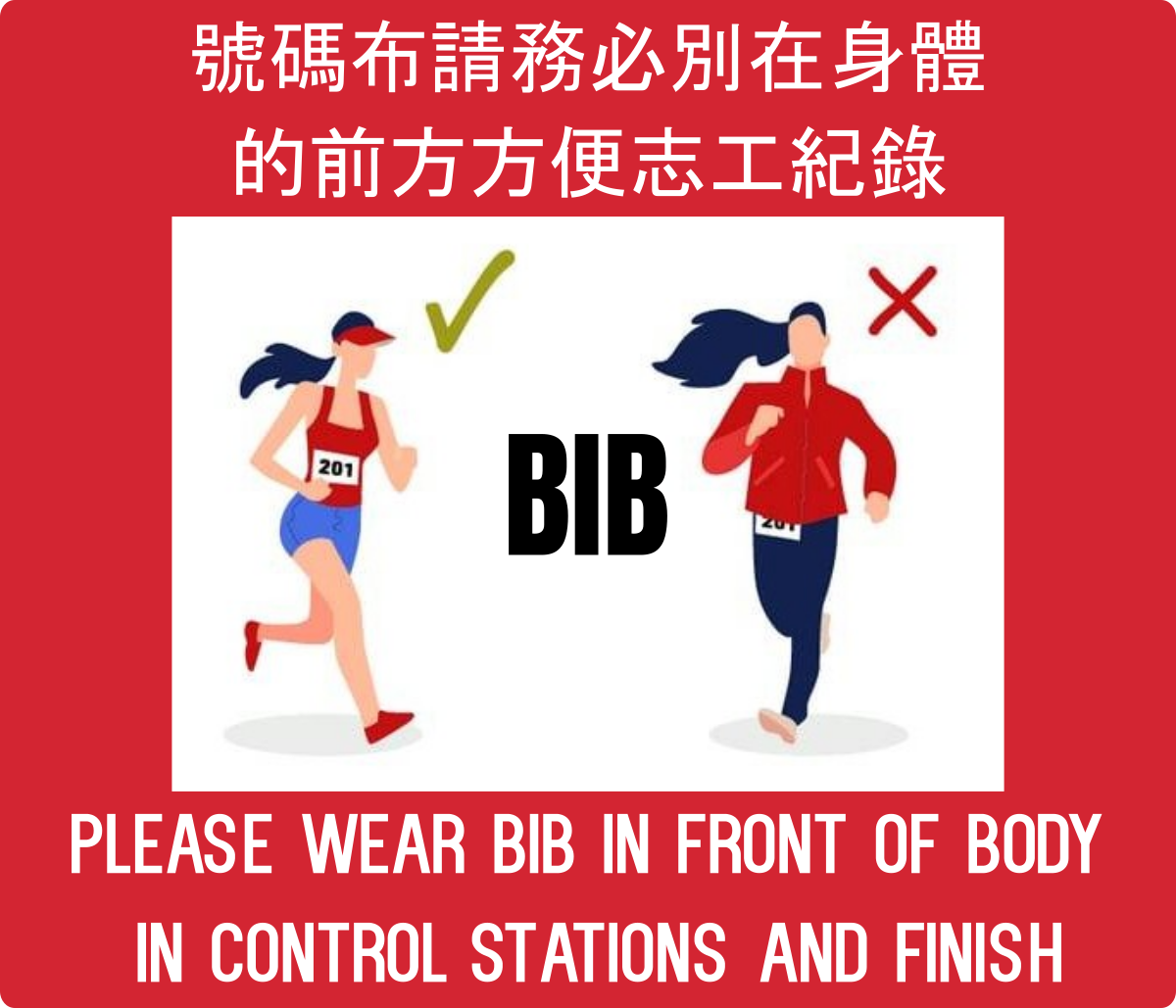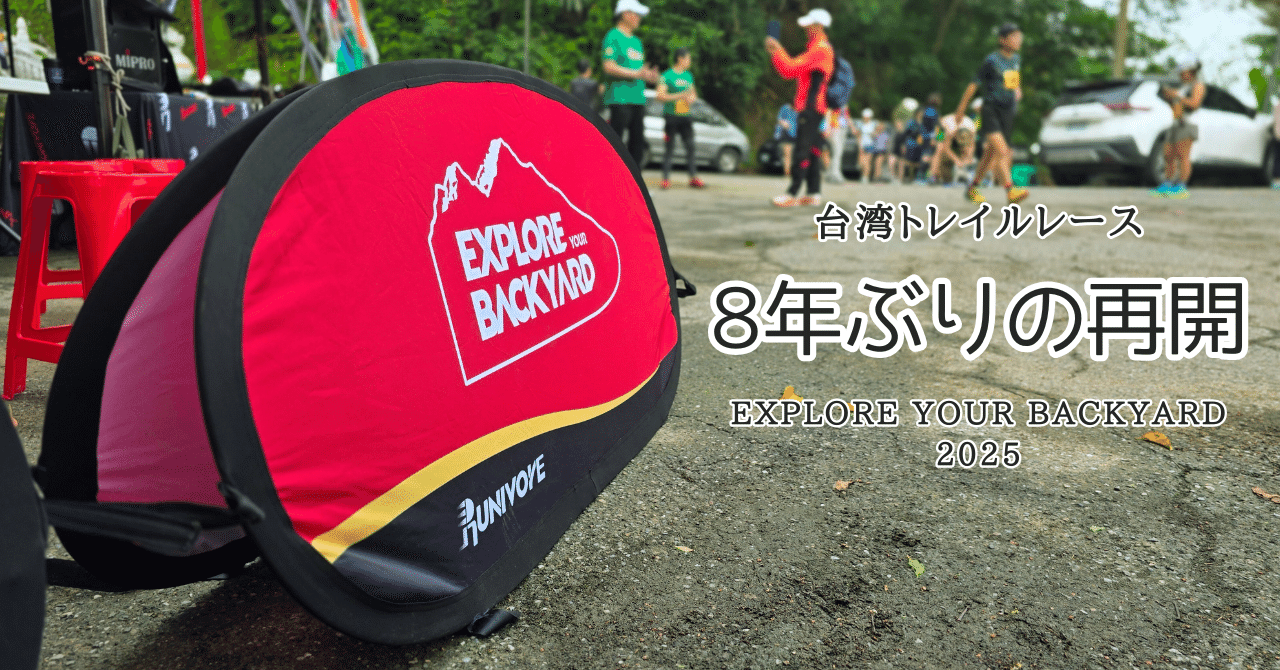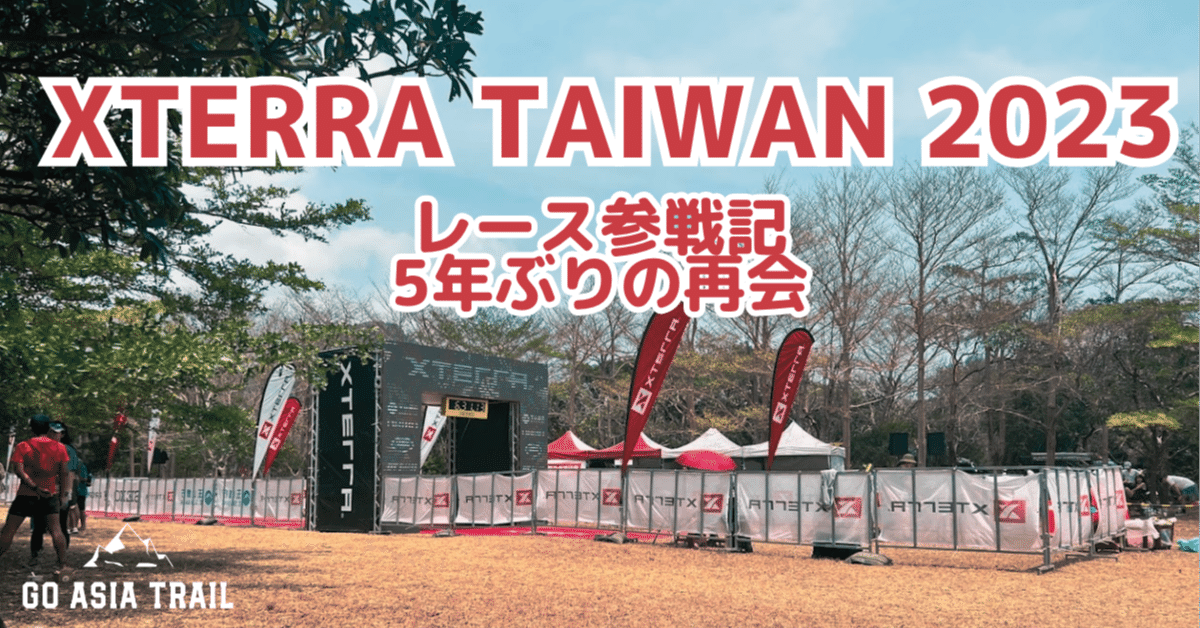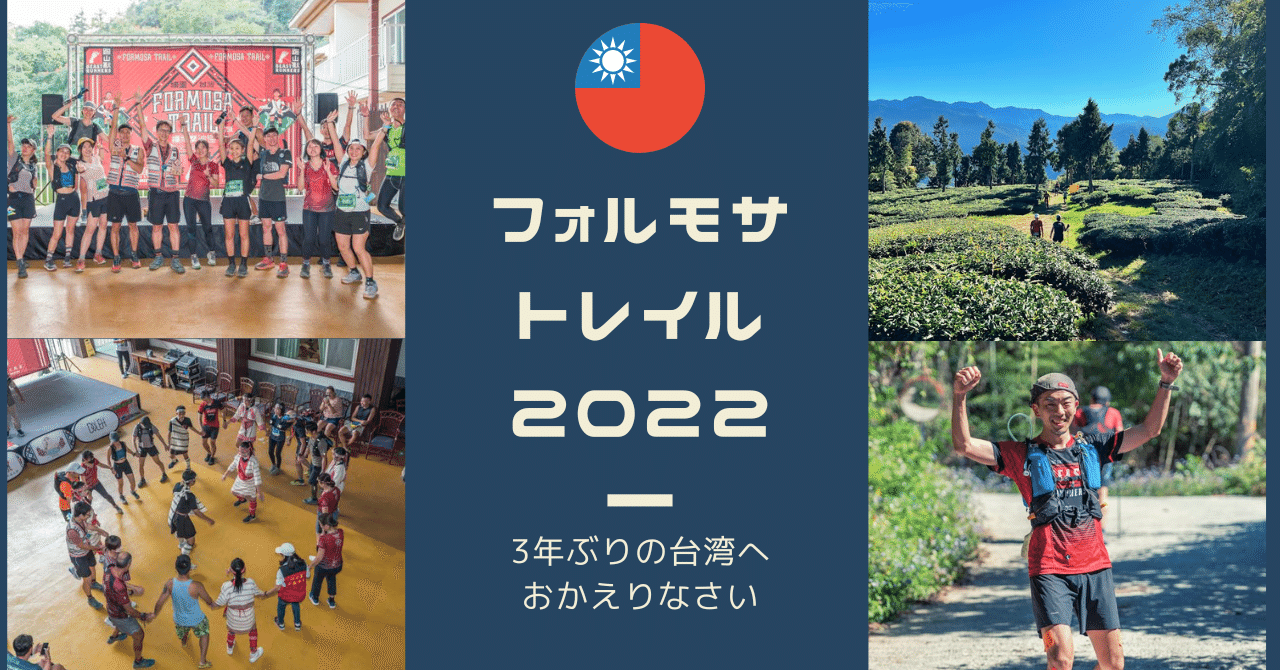Continuing from the previous article, regarding the Formosa Trail that I recently participated in. This article is about the race day on December 1. The Formosa Trail is the last race of the year for me. My friends have been asking me why I didn't enter the 104km race (lol) and "What, 40km?" But since this race is meant to be a consolation trip to thank them for their hard work over the past year, I chose the moderate 40km race.
Race/Course Outline
First, here is the race schedule.
- 4:00: 104km/65km start
- 5:00: 40km start
- 8:00: 16km start
- 8:30: 8km start
Here is the official course map of the event. Green is the 40km course I ran. The course is the same as the 104km and 65km courses. There are two aid stations (at 15 km and 25 km). The trail is about 20 km, the forest road is about 15 km, and the rest is road.
About 2 km before the aid station, there is a signboard as shown below. Due to the course layout, you will have to go to the aid station once and come back to the first sign, so if you make a mistake, you will not be able to go to the aid station and will be disqualified.
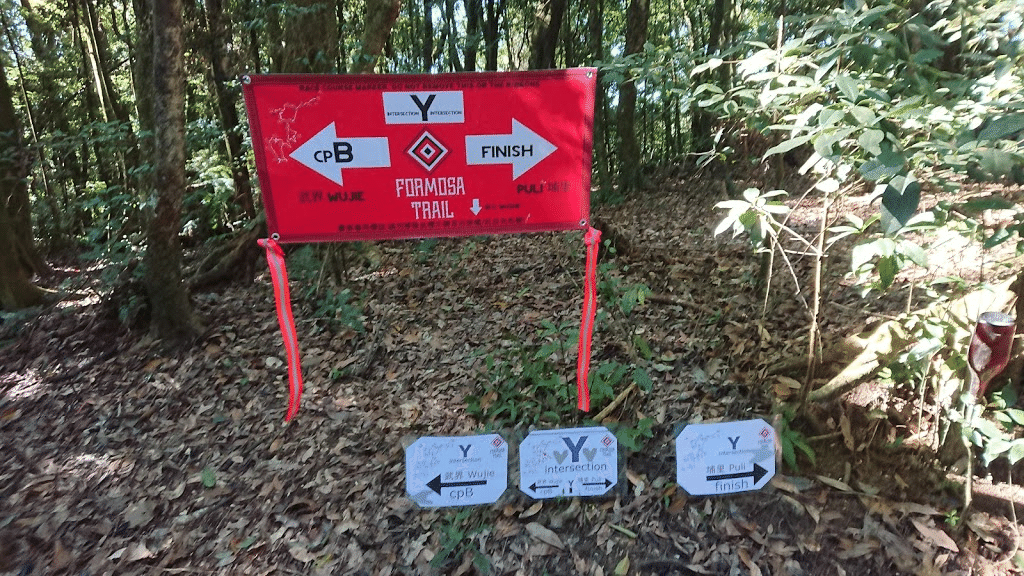
Regulations require the 40km runners to wear almost the same equipment as the 104/65km runners. At least 2 liters of water, at least 600 kcal of rations, and a headlamp are required (since the race starts at 5:00 AM, it is still dark at the start). Also, a fast aid kit is required, as well as an antihistamine (antihistamine. Muci. Highly recommended) and povidone-iodine swabs (isodine, apparently. I brought some antiseptic ointment) and note that they are specified in detail.
Race regulations are detailed on the following page. (*The spare headlamp was changed to mandatory in the e-mail that came about 1 or 2 weeks before the race, even for the 40 km racers.)
The temperature was a forecasted high of 27 degrees Celsius. It was cooler in the shade, so I didn't feel that hot.
Running the Formosa Trail 40km
Just before the start. Meeting the minimalist runners.
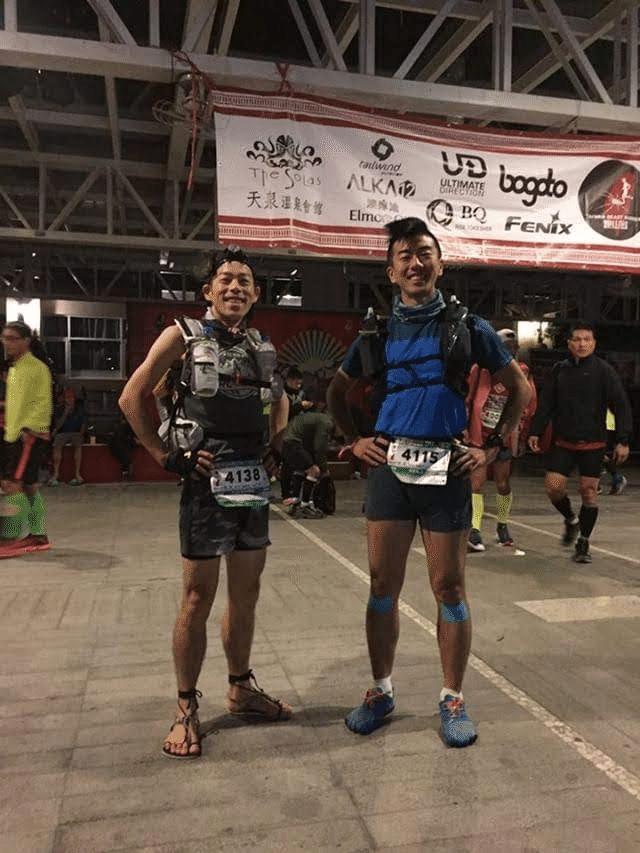
Arrived at the race start site around 4:15 am. Since the day before the race, I had been debating on which shoes to go with. I brought the following two shoes to Taiwan.
- Vibram FIveFingers V-Trail
- Altra Lonepeak 3.0
I thought I would be safe and go with the Altra LonePeak since I had only 3 hours of sleep the day before and I had to carry 2 liters of water, but when I arrived at the race venue, I saw many minimalists wearing Wallach and Merrell minimalist shoes. I decided that I had to wear V-Trail shoes, so I quickly switched to V-Trail shoes and took a photo with a Japanese minimalist runner wearing man3dals.
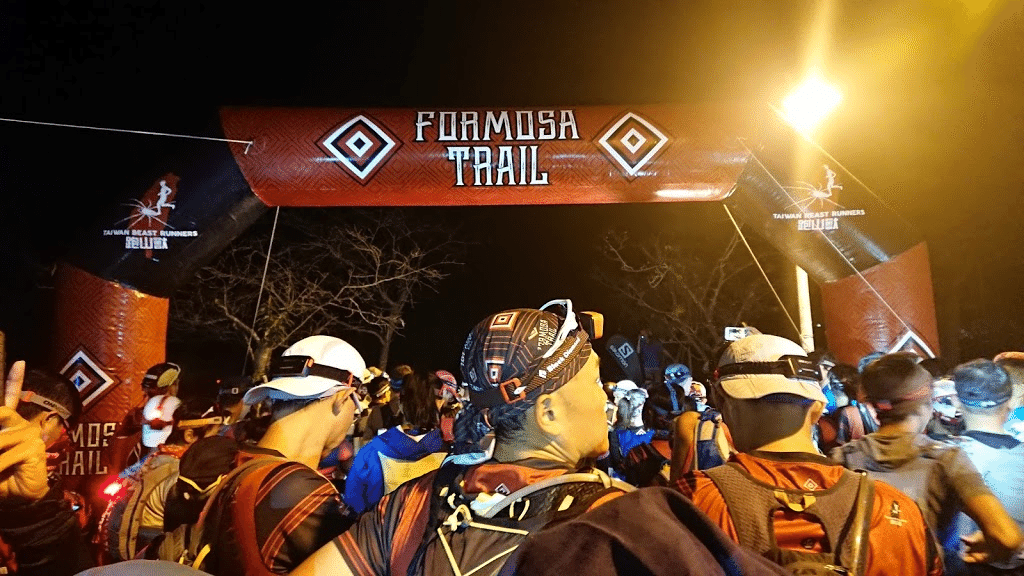
Just before the start. I spend some time talking and taking pictures with the minimal runners and their friends. Then, I ran into a friend of mine who lives in Kyoto (neither of us knew he was participating in this race). I never thought I would run into them deep in the mountains of Taiwan... lol.
Story on the race route
At 5:00 a.m., the 40-km race started.
It is about 4.5 km to the trailhead. After a road and a forest path, you will enter the trail. It climbs all the way up to the highest point, 1667 meters above sea level. The climb is rather technical, with ropes in places. However, thanks to my V-Trail shoes, I was able to climb without using ropes and just climbed up with my feet and hands, beast style (laugh). However, there were some parts where we had to climb straight up, and it was hard on my calves.
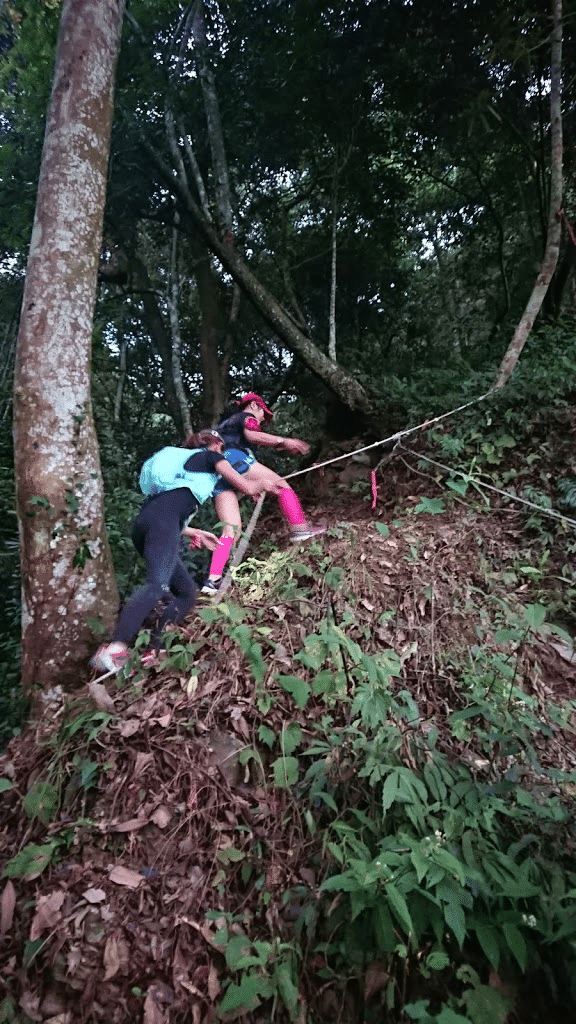
Then you reach 1667 meters, the highest point of the 40km section, and from there you can run on the trail with fun moderate ups and downs. The trail is superb and fluffy. It is relatively runnable. I have the impression that Asian races tend to have rather hard trails, but here the trails feel more like Japanese trails. There are some technical and steep downhill trails, but thanks to my V-Trail shoes, I was able to handle them without any difficulty. The trails were soft and fluffy, and I was in a good mood, saying, "The V-Trail was a great choice! I was in a good mood (but later regretted it).
The scenery was also wonderful. The pictures don't do it justice, but the course is surrounded by tea plantations and bamboo forests that exude a Taiwanese and Asian atmosphere. The area around the Formosa Trail course is said to be a tea growing area.
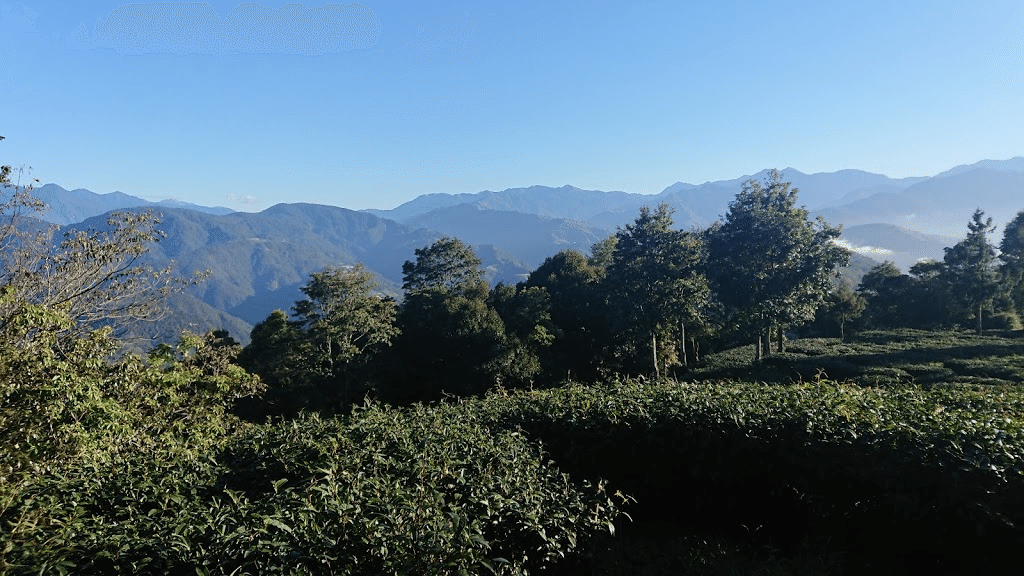
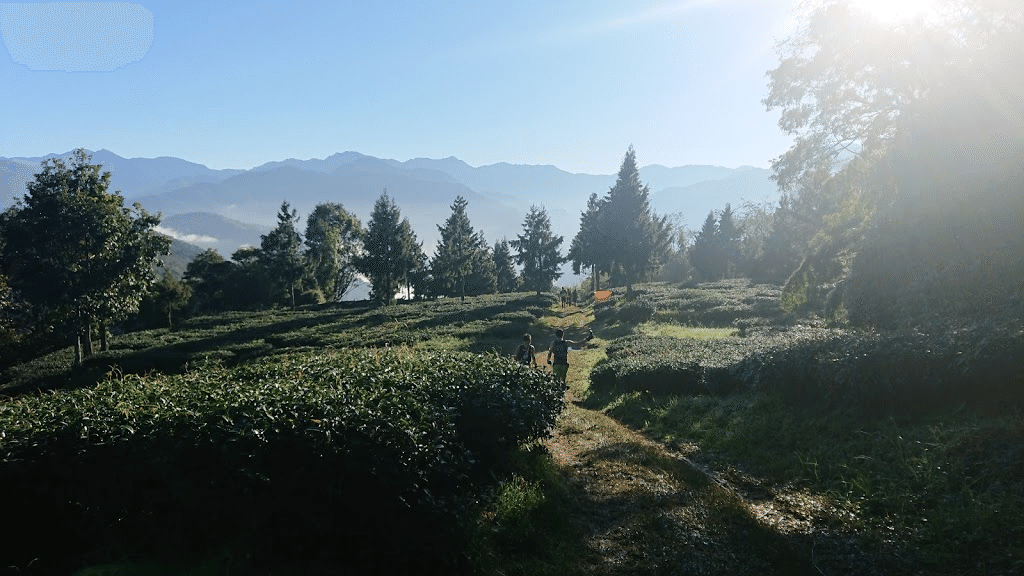
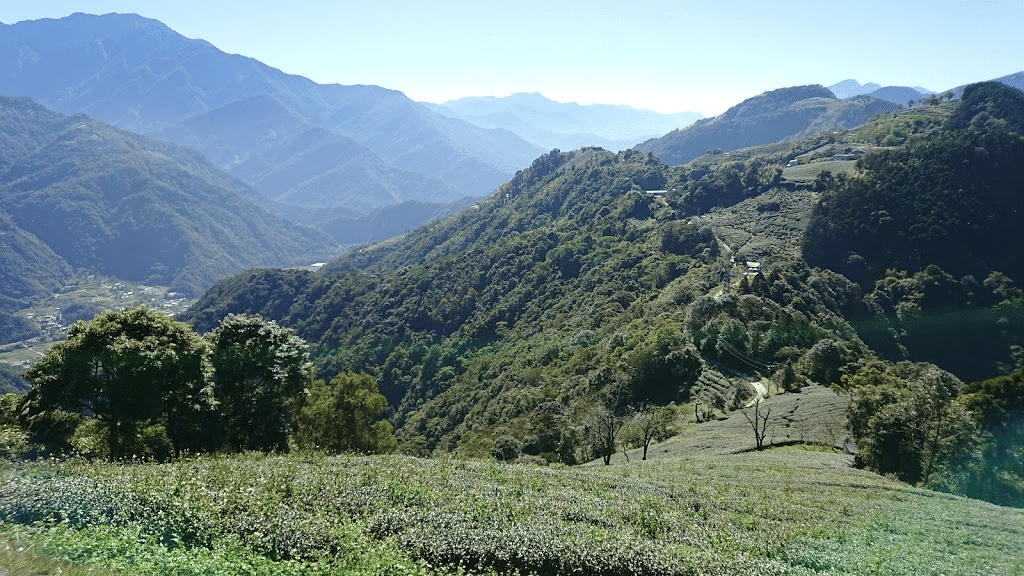
The course markings are not as confusing as the previous reputation suggests, and I did not get lost. (In fact, the last time I was in JEJU, it was more confusing.) However, the course seemed a bit rough, with trees lying on the trail in places, and you had to dive or jump over them at times to get there.
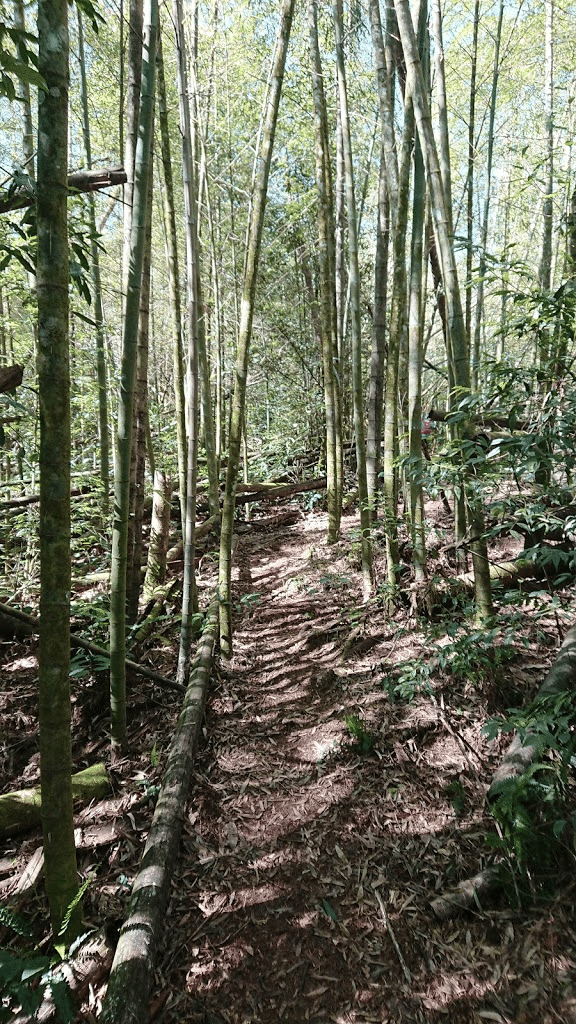
As we enter the aid station area, we pass runners with fast legs and 104km/65km runners on the course. We would say to each other, "Jayou (加油)!" or "Good Luck!" if you are from Europe or America. The Western runners are especially excited, high-fiving each other and tapping each other on the shoulder to cheer each other up. There are some narrow areas that make it difficult to run, but this is where I was able to experience the physical interaction between bodies that transcends nationality and race.
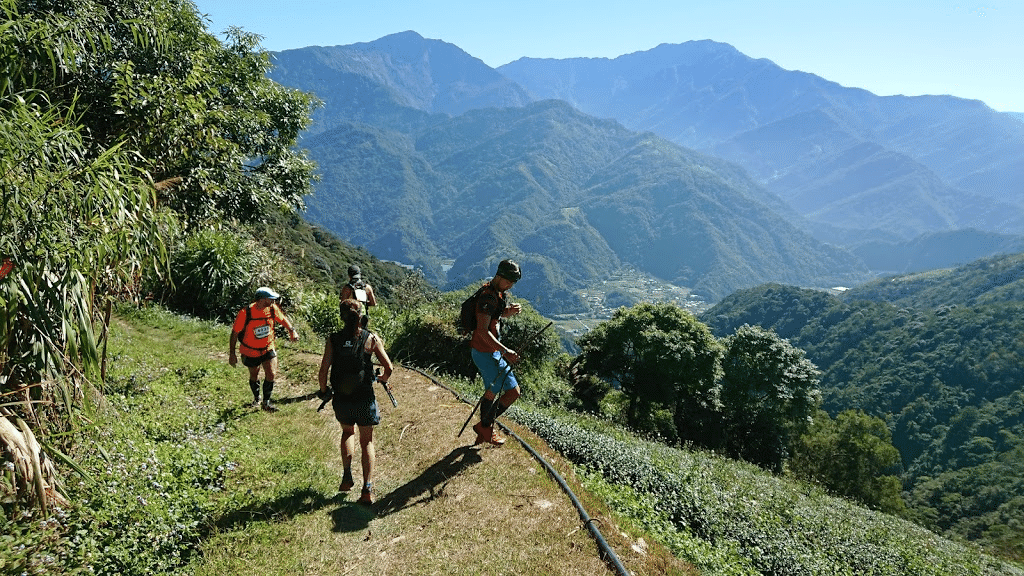
Aid Stations
First, the 15 km point. It is located in the middle of a tea plantation. The following items are offered here.
- Fruits (pineapple, mandarin oranges, grapefruit, bananas, honey lemons, etc.)
- Snacks (nuts, crackers, bread with peanut butter, sweets)
- Instant noodles
- Drinks (water, cola, sports drinks)
Pineapple is especially tasty because it is Taiwanese! It's sweet and sour, and it's good for a tired body. The pineapple is cut into very large pieces, so it is very satisfying to eat. However, there are no toilets at this aid!
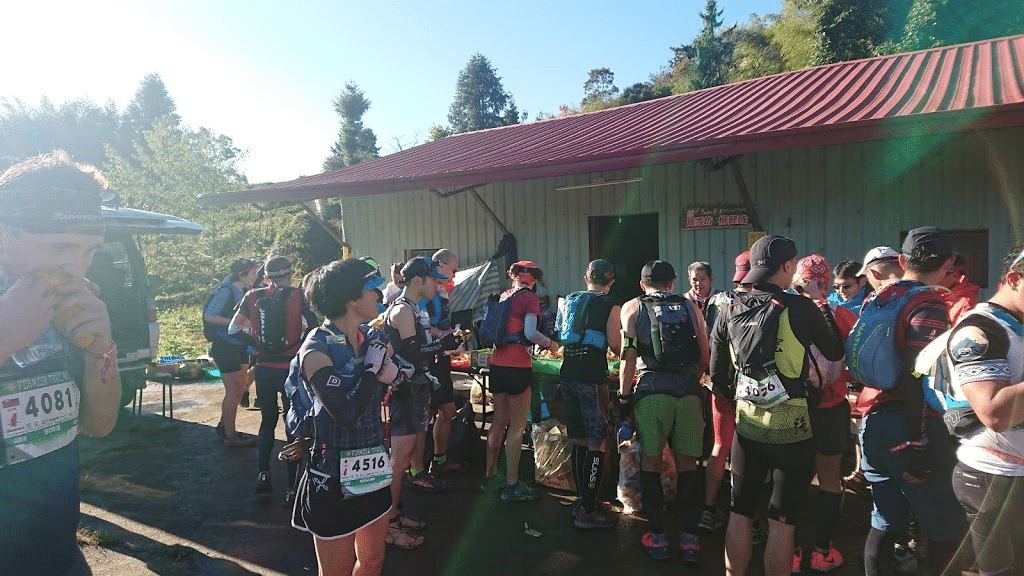
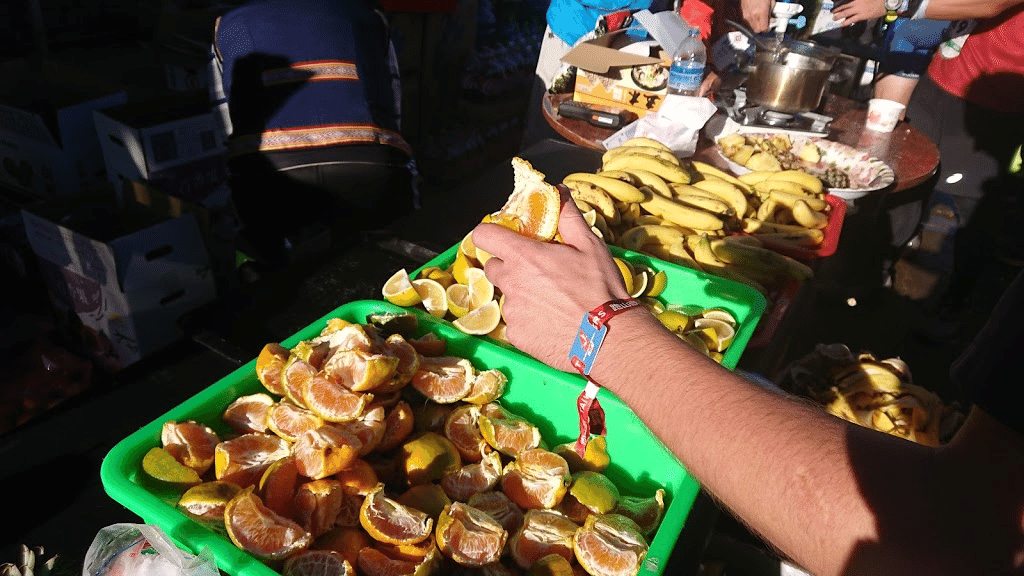
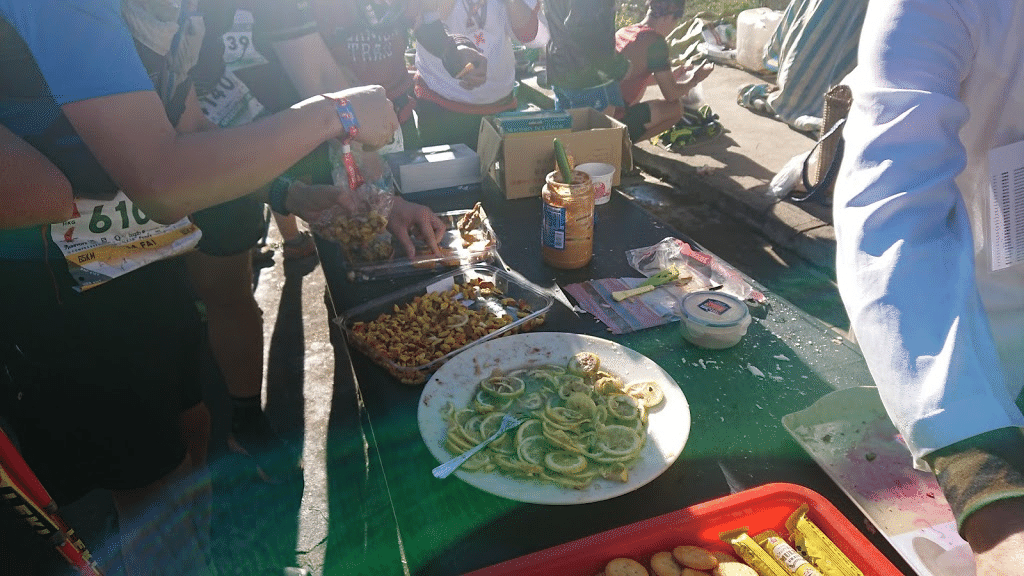
For 104km runners, if you don't enter by 12:00 noon, you will be automatically transferred to the 65km course. However, if a 104km runner finishes the 65km race, he/she will be recorded as having completed the 65km race on ITRA and will receive 4 points.
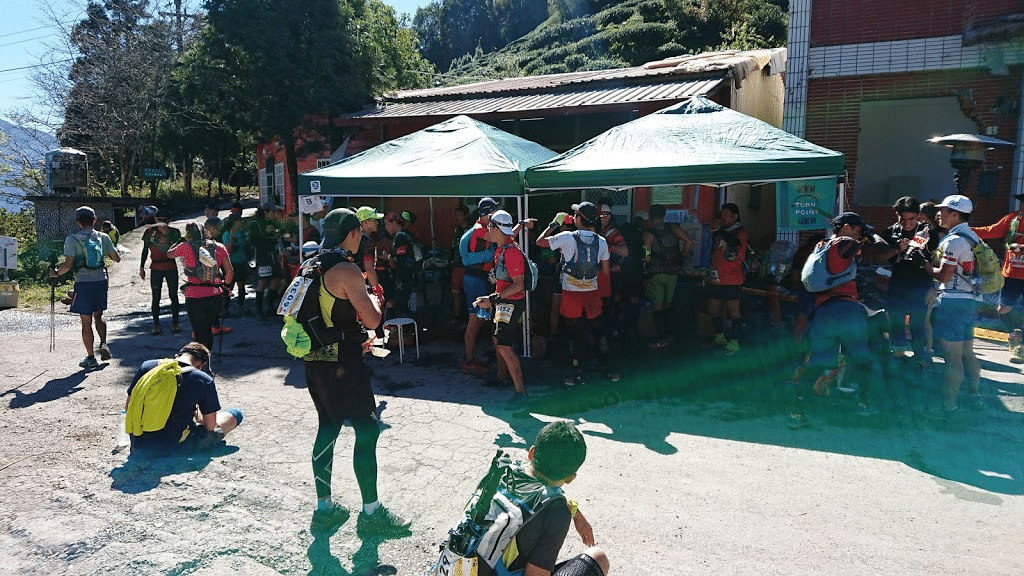
And at the aid station here, in addition to fruits and snacks, they serve the famous Taiwanese tapioca milk tea (珍珠奶茶)! This surprised me.
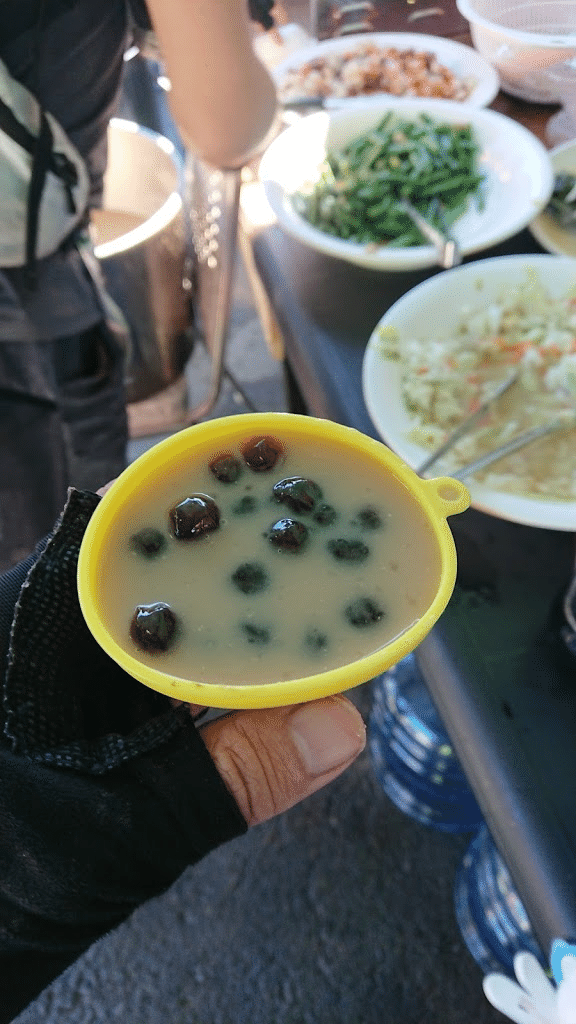
Also, Taiwanese dishes such as stir-fry and dough are offered, and you can eat freshly prepared food stir-fried by volunteers in the back. It is gorgeous.
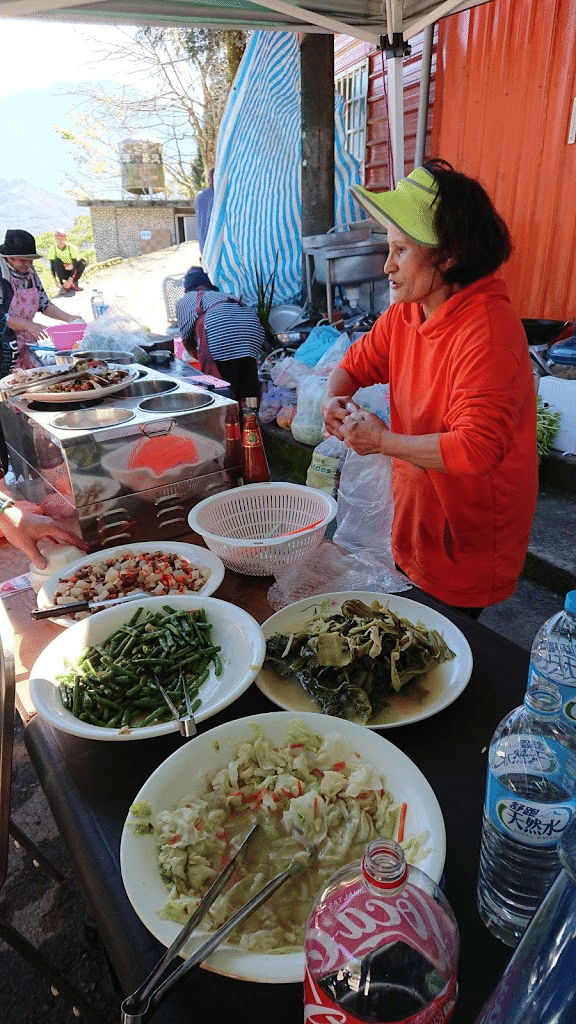
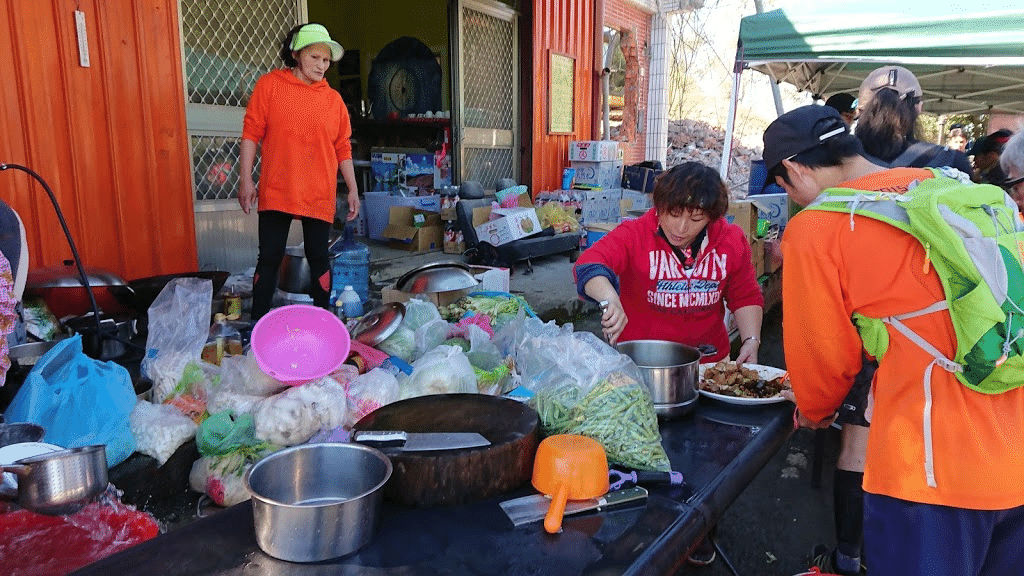
At this aid station, we stayed for about 30 minutes, chatting with other Japanese and getting too relaxed. This time, since it was a consolation trip, I didn't worry about my time...I was relaxed enough to upload an Instagram from the site (lol).
Hell in the woods at the end of the race.
After the aid at the 25km mark, we hit the trail for about 5km. You can run for a while on a fluffy trail with moderate ups and downs, but just past the 30km point, you enter the most difficult part of the race, a long downhill forest road hell. I usually run wearing Vibram FiveFingers, but the downhill road and forest paths are hard for me...my soles are especially fatigued and I can't go any faster. The Japanese runner who was running with me also fell behind, and I had no choice but to slow down here. The rest of the race was just forest roads and roads, which is my least favorite area of VFF.
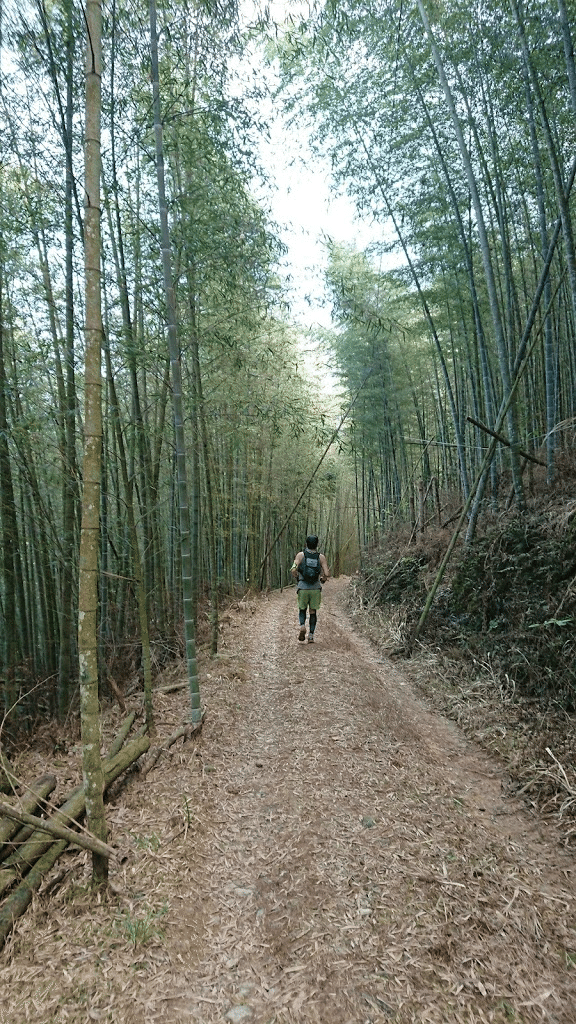
We were thankful that we were able to share this experience with VFF, and we were able to gain some distance without much effort. Along the way, I gradually pick up the pace as I get the hang of running at an easy pace. And then we find ourselves in an area with many chicken coops where we had run earlier in the day. At this point, we have about 3 km to go.
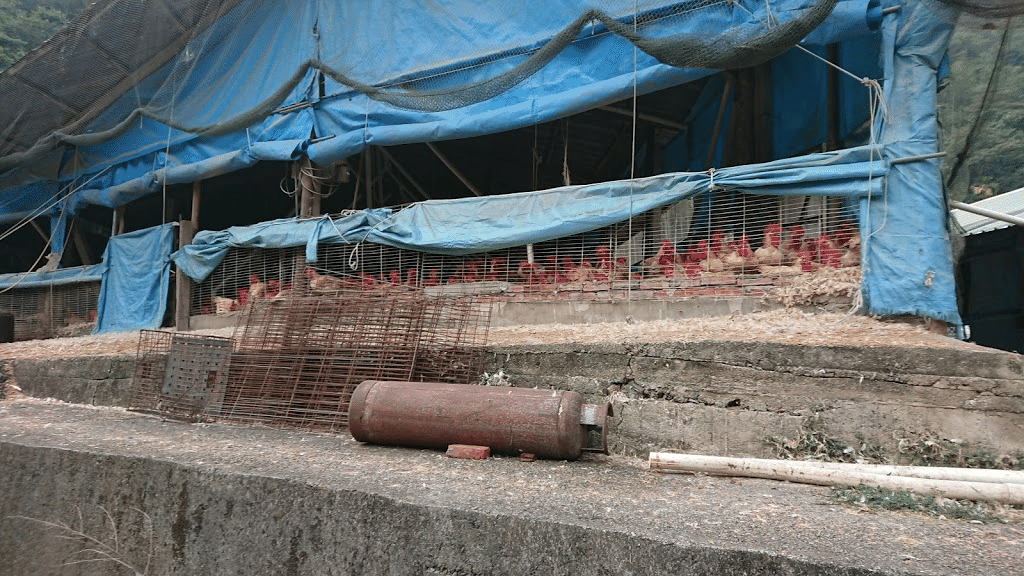
And finally, just before the finish line, the course is lost. After wandering around the outskirts of Puli for a few minutes, I made it to the finish line without incident. The time was about 9 hours and 15 minutes. My feet hurt, but it was a fun 40 km.
After the Goal
After the goal, we chatted over beer with other Japanese who had completed the 40 km (beer is free when you return the chip for the record). Everyone's impression was that they had a good time and that it was a bit hot. I reflected that my best selection for the race here was the inov-8 X-Talon 212 rather than Vibram. I was also watching a folk dance. The video below is part of the dance, but it was energetic. The next day at the after-party, you can also enjoy watching and actually dancing the ethnic dances (more on this in a future article).
Afterwards, we returned to the hotel for a quick shower and nap. After that, I had dinner with another friend at a hot pot restaurant in Puli City.
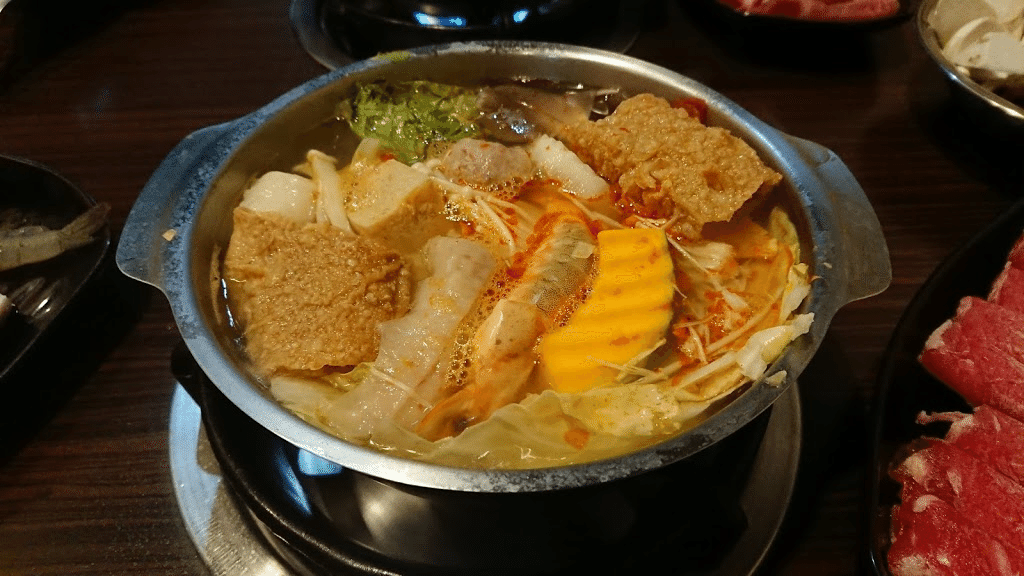
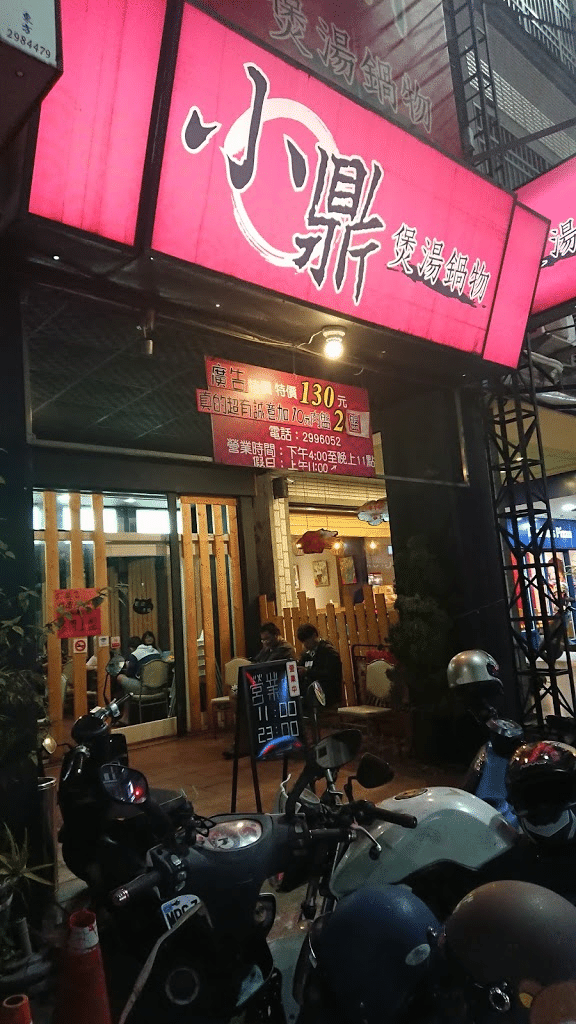
It's a popular local restaurant, I guess, and there were three or four groups lined up for a full table, highly rated on Google reviews. It was delicious, hearty, and perfect for a post-run dinner. All-you-can-eat rice and all-you-can-drink soft drinks. The only thing is that they don't have alcohol. I would like to use this place again next year.
That's all for Formosa Trail Day2!
